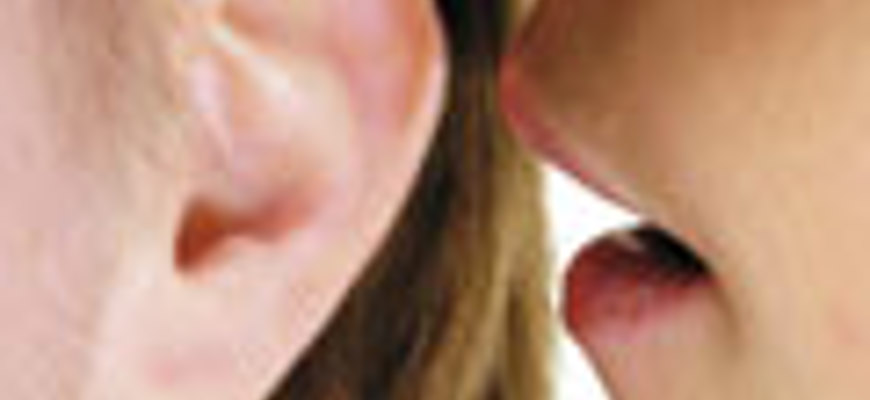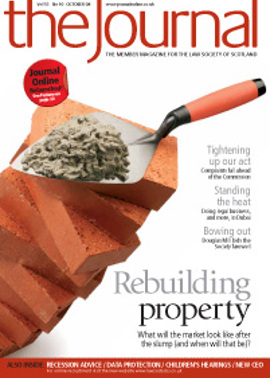Hearing better

It is pleasing, if a little surprising, that governments of various hues, from the Tories of the 1990s, Labour/LibDem in the 2000s and now Nationalist, have consistently shown strong support for Scotland’s children’s hearing system. On 1 August 2008, the Scottish Government published a consultation document on possible reforms of this system, and Fiona Hyslop, Cabinet Secretary for Education and Lifelong Learning, affirmed the Government’s commitment to the principles underpinning the system including, most importantly, the principle that children who have offended and children who have been neglected and abused are equally deserving to be considered as children in need.
The consultation document seeks views on a number of structural changes and policy amendments that will more or less radically alter the way the hearing system is presently operated. The aim is to strengthen and streamline the system without affecting its underlying philosophy. The details are yet to be worked out for most issues and a number of decisions have yet to be made. The consultation period ends on 24 October 2008 and it is expected that a bill will be published in June 2009.
Structural changes
The major structural change being proposed is the creation of a single national body replacing those bodies that are currently organised at local authority level, including the 32 children’s panels, the 30 children’s panel advisory committees (CPAC), and the 32 panels of safeguarders and curators ad litem. Clearly there is needless duplication here, but there are also structural anomalies. My friend Liz, who trained as a panel member with me in Glasgow, moved to Perth after only one year of service sitting on hearings. She was given the choice of retraining in her new area or leaving the system. This pointless requirement cost the system a valuable member, as well as wasting her earlier training space. A national approach will avoid this waste in the future.
Putting the system on a national basis would also enhance consistency of practice across Scotland. Nevertheless a crucial element in the system, indeed justification for the very existence of children’s panels, is local delivery of services. Panel members, in particular, therefore need to retain a local link with the children they are dealing with, for the primary benefit of Scotland’s unique hearing system is that decisions are made by lay panels who can legitimately claim both a knowledge of the local community of which the child is a part and an understanding of what, in that community, amounts to acceptable parenting. This representative role should never be forgotten.
The role of local authorities will, if these proposals are accepted, be very substantially reduced, though they will retain the important duty of giving effect to hearings’ decisions. This development is to be welcomed, and not only for practical reasons. At the moment, though functionally independent of local authorities, hearings retain many structural links with them, in terms of appointment, training and payment of expenses of panel members and safeguarders. Families who appear before hearings see this structural link between the local authority (whose social workers have – usually – instigated the investigations that led to the hearing being convened) and the hearing itself, and find it understandably difficult to accept that the hearing is not simply a branch of the social services. Thus a perception of lack of independence exists and the current system serves to obscure the (legal) independence of the hearing. Breaking the link is likely to lead to greater confidence in the independence of the system.
Grounds for referral
The consultation paper does not invite any discussion of the existing grounds for referral to the children’s hearing. This is unfortunate, because in my view amendments to s 52(2) of the Children (Scotland) Act 1995, which contains the grounds, can usefully be made.
In particular I think the time has come to repeal s 52(2)(g), the “incest and related offences” ground. This was necessary in the original Social Work (Scotland) Act 1968, since at that time incest was not a “scheduled offence”, with the result that children who had suffered from the (common law) crime of incest could not be referred as sexual offence victims. This rationale disappeared in 1986 when incest and, by then, related offences were made scheduled offences by the Incest and Related Offences (Scotland) Act 1986. Nevertheless the ground was re-enacted in the Children (Scotland) Act 1995. But this remains pointless since all children who are victims of incest or the related offences can now be referred under s 52(2)(d), and the continued existence of this additional ground is a needless complication. (It is used very infrequently.) Nothing is lost by repeal.
And I wonder whether we need to retain s 52(2)(k), the solvent abuse ground. This was introduced by the Solvent Abuse (Scotland) Act 1983, as a result of a moral panic whipped up by the media concerning “glue sniffing” by children. I doubt whether this remains the social problem today that it once was, and in any case a child who puts him or herself at risk by this practice can be referred on the basis of s 52(2)(a) (beyond parental control) or even s 52(2)(j) (“any drug, whether or not a controlled drug”).
A rather more recently introduced ground is contained in s 52(2)(m), that the reporter has been required by the sheriff, under s 12 of the Antisocial Behaviour etc (Scotland) Act 2004, to refer the child’s case to a children’s hearing. This rule fits very uneasily into the present system. First, it bypasses the crucial element of reporter discretion. Secondly, its wording is entirely circular: the ground for referral is that the reporter has been required to refer. It would be more sensible to allow the reporter to determine for him or herself whether the life circumstances of the child are such that a referral is necessary, and to word the ground in such a way as directs attention to the child’s behaviour that took him or her to the sheriff court under the 2004 Act. This would better harmonise the antisocial behaviour legislation with the philosophy of the children’s hearing system and the opportunity is there to do so now.
Children having sex
There is another amendment to the grounds for referral to a children’s hearing that might usefully be considered, as a result of the recently published Sexual Offences (Scotland) Bill. The Scottish Government rejected (thankfully) the Scottish Law Commission’s original recommendation to make sexual activity by children under the age of 16 a ground for referral, though since the bill makes all such sexual activity a criminal offence any child indulging in such activity can be referred in any case. That in itself is not problematic, but we must always remember that the hearing system is designed to provide care for children in need of support and not to punish children for their behaviour (including their sexual behaviour).
The problem with children being referred to a hearing on the basis of sexual activity (I limit these comments to consensual sexual activity) is that if the ground used is s 52(2)(i) – that the child has committed an offence – then the child may be branded a sex offender, at least for purposes of disclosure under Part V of the Police Act 1997 (as amended by the Protection of Vulnerable Groups (Scotland) Act 2007), and for purposes of rehabilitation under the Rehabilitation of Offenders Act 1974. This is a disproportionate response to consensual sexual activity: for example if the activity is between two 15-year-olds and a ground under s 52(2)(i) is established, neither of the pair will realistically be able to work with children throughout their lives.
The hearing may well have a role to play in either discouraging underage sexual activity, or putting in place measures designed to minimise the risks involved, but punishment of this nature, even indirect, is not justified. The solution, however, is simple: when the child is under 16 he or she is not only the “perpetrator” of a criminal offence but is also necessarily a “victim”, and the branding of the child as a sex offender with its disproportionate consequences can be avoided completely by referring the child under
s 52(2)(d) instead of s 52(2)(i). When both participants are under 16 and the sexual activity is entirely consensual, then in my view reporters who consider it appropriate to arrange a children’s hearing should be required to use s 52(2)(d) and not s 52(2)(i). This could be done very easily by amending s 52(2)(i) to add the words “except an offence unders 27 [as it presently is] of the Sexual Offences (Scotland) Bill 2008”.
The proposals currently being considered are likely to achieve the Government’s aim of streamlining the children’s hearing system without compromising the principles that make it so valuable. But more could be done, with little cost. The Scottish Government does seem open to persuasion.
Kenneth McK Norrie is a Professor of Law in the University of Strathclyde
In this issue
- IHT: spouses and the nil rate band
- Taking up the message
- SGM: support for review process
- Rebuilding to order?
- Nipped in the bud?
- Hearing better
- Dubai: an ever-expanding market
- When is a discharge not a discharge?
- Out of the hot seat
- Site to behold
- Now for the real thing
- Navigating the perfect storm
- Data, personal data and statistics
- Caring about sharing
- Rainmaker - or cloud on the horizon?
- The limits of belief
- Process queries
- Scottish Solicitors' Discipline Tribunal (1)
- Scottish Solicitors' Discipline Tribunal (2)
- From agreement to obligation
- Ganging up on exploitation
- Scottish Solicitors' Discipline Tribunal
- Website review
- Book reviews
- Up for the big event
- Old lessons hold good
- The revolution starts here?
- CML Handbook: why the fuss?






